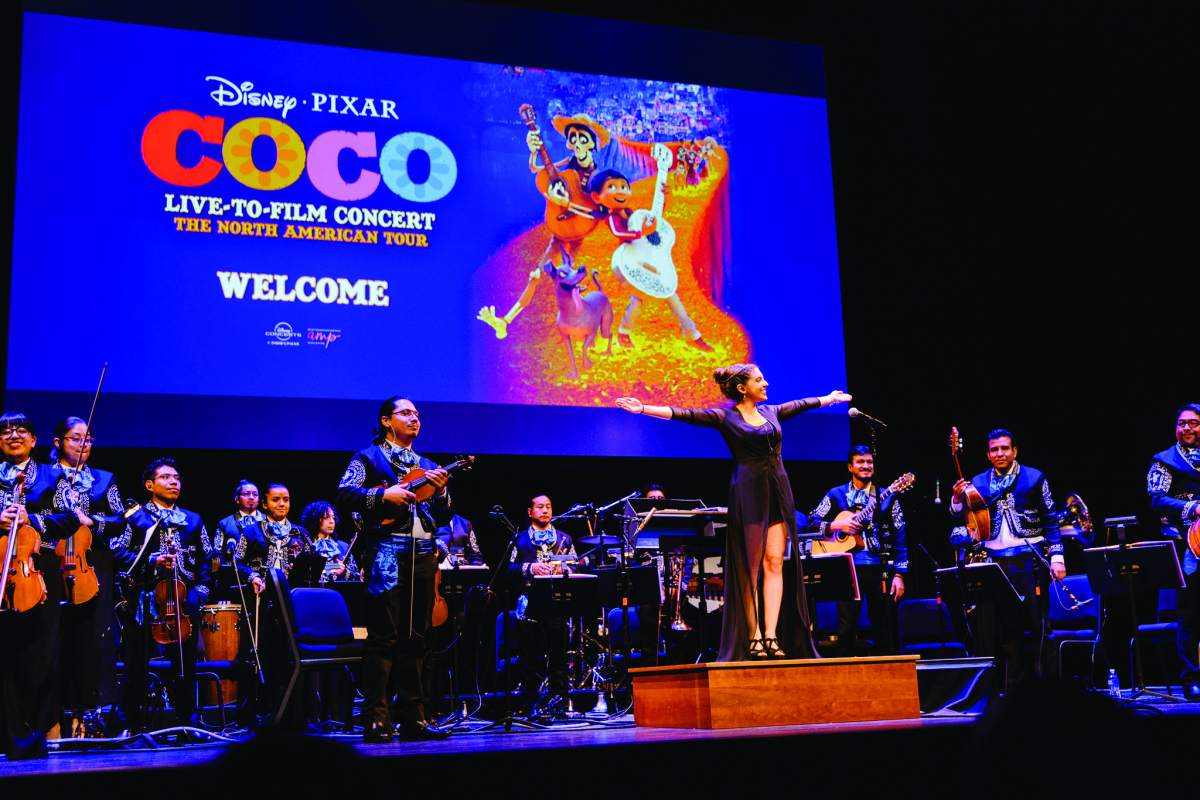
While my genetic lineage predominately links me to Europe, many of the practices and traditions that move me originate from cultures that bear no resemblance to my DNA. For decades, I’ve had a wall in my home dedicated to the photos and remembrance of those who have departed from this world and remain with me in spirit. Naturally, when I became aware of the Mexican religious holiday of Dia de Los Muertos, it was immediately recognizable and deeply familiar. That being said, it should come as no surprise that the Pixar animated feature Coco is one of those rare films that chokes me up every time. Today, I live with a partner and two children who all come from Mexico, so this tradition and film have taken on new dimensions of meaning for me. Thus, when I learned there would be a live musical performance with a screening of Coco at Benaroya Hall, I eagerly attended with my partner and our ten-year-old daughter.
The structure of this event is simple enough: a large projection screen hovers above, showing the film and a live orchestra plays the corresponding soundtrack below. In this case, we were privileged to a performance of Orquesta Folclórica Nacional de México (The National Folk Orchestra of Mexico) under the direction of conductor Esin Aydingoz, all of whom were exquisite. The quality and precision of the accompanying orchestra were so seamless that one could easily be excused for getting sucked into the film and forgetting that the score they were hearing was being played live. However, if you were so inclined as to let your sightline dip below the silver screen, you were offered the very unique opportunity of watching the production process unfold before you.
I had never realized that the score for Coco contained so many parts for the harp. It is a simple revelation, but one that I won’t forget when I re-watch the film in the future. There was also a screen in front of the conductor that showed the running film along with some sort of numerical tracking system that broke up the score into different sections. I never figured out if it was related to measures in the music or a sort of chapter/scene in the story, but I found watching that in relation to what was happening on the big screen very fascinating. There was ultimately the overall advantage of hearing the music played live by such an astoundingly skilled orchestra. They had the structure; their playing was tight and without room for error, and, most importantly, they made the passion of the music sing through their instruments. Putting all that together with a movie I already love, it was a pure joy to vacillate between observing the process and just being absorbed into the film.
Upon leaving Benaroya Hall, it was clear that both my partner and I had a far greater appreciation for all we had just witnessed than our little girl. For her, I think it was more of watching a movie she likes in an unconventional setting, and she missed the popcorn or couch back home. I’ve told you what the experience was for me, but it was even more meaningful for my partner as she left with a renewed pride in her cultural heritage: the traditions, the rich history, and the mastery of this orchestra of fellow Mexicanos keeping it all alive in the present day. It was also clear that she was not alone, and it was exhilarating to feel that the celebration of Mexican pride rang so clearly for so many people, even in a city that is over one thousand miles away from the Mexican border. If Coco Live-to-Film comes our way again next Dia de Los Muertos, we will be there… this time in full Catrina makeup.
